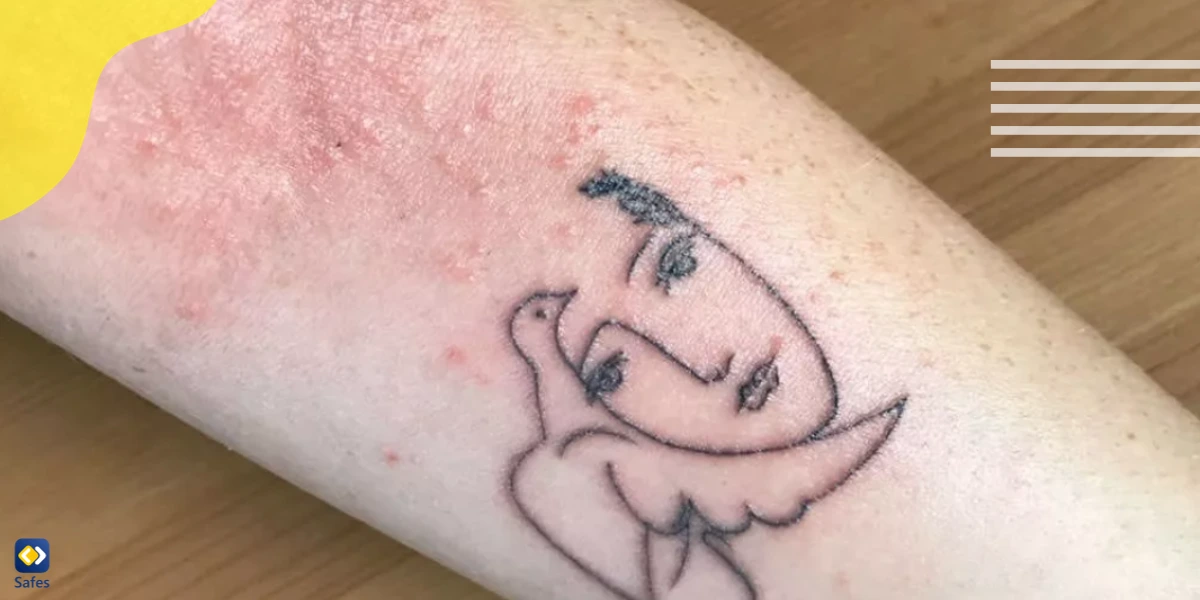Raising teenagers in today’s world often involves navigating through complex issues. One of these involves body modifications, particularly tattoos. This article serves as a comprehensive guide to understanding how old you have to be to get a tattoo and offers advice to parents on managing this delicate topic.
Download and Start Your Free Trial of the Safes Parental Control App
Understanding the Legal Age of Getting a Tattoo
In many jurisdictions, the minimum age for getting a tattoo is 18 years old, signifying the transition to adulthood. However, this is not a universal rule, and how old you have to be to get a tattoo can vary significantly from one region to another.
The United States’ Perspective on Age and Tattoos for Teenagers
In the United States, the legal age for getting a tattoo without parental consent is generally 18 years old. However, state laws differ, and some states allow minors to get tattoos with their parents’ permission. A few states, such as Alaska, Arkansas, and California, prohibit tattooing a minor under any circumstances.
The following table represents the law as of April 2022, as reported by Manifest Studio.
| State | Law |
| Alabama | Parent or guardian consent for minors |
| Alaska | 18 |
| Arizona | Parent or guardian present for minors |
| Arkansas | 18 |
| California | 18 |
| Colorado | Parent or guardian consent for minors |
| Connecticut | Parent or guardian consent for minors |
| District of Columbia | 18 |
| Delaware | Parent or guardian consent for minors |
| Florida | 16 – Parent or guardian consent or presence until 18 years old |
| Georgia | 18 |
| Hawaii | Parent or guardian consent for minors |
| Idaho | 14 – Parent or guardian consent for minors until 18 years old |
| Illinois | 18 |
| Indiana | Parent or guardian consent and presence for minors |
| Iowa | 18 |
| Kansas | Parent or guardian present for minors |
| Kentucky | 16 – Parent or guardian consent for minors until 18 years old |
| Louisiana | Parent or guardian consent for minors |
| Maine | 18 |
| Maryland | 18 |
| Massachusetts | 18 |
| Michigan | Parent or guardian consent for minors |
| Minnesota | 18 |
| Mississippi | 18 |
| Missouri | Parent or guardian consent for minors |
| Montana | Parent or guardian in-person consent for minors |
| Nebraska | Parent or guardian consent for minors |
| Nevada | 14 – Parent or guardian consent and presence for minors |
| New Hampshire | 18 |
| New Jersey | Parent or guardian consent for minors |
| New Mexico | Parent or guardian consent for minors |
| New York | 18 |
| North Carolina | 18 |
| North Dakota | Parent or guardian present for minors |
| Ohio | Parent or guardian consent for minors |
| Oklahoma | Parent or guardian present for minors |
| Oregon | Parent or guardian consent for minors |
| Pennsylvania | Parent or guardian consent for minors |
| Rhode Island | 18 |
| South Carolina | 18 |
| South Dakota | Parent or guardian consent for minors |
| Tennessee | Parent or guardian consent for minors |
| Texas | Parent or guardian consent for minors |
| Utah | Parent or guardian consent for minors |
| Vermont | Parent or guardian consent for minors |
| Virginia | Parent or guardian present for minors |
| Washington | 18 |
| West Virginia | 16 – Parent or guardian consent and presence for minors |
| Wisconsin | 18 |
| Wyoming | Parent or guardian present for minors |
Key Takeaway: The legal age for getting a tattoo varies by state and often requires parental consent if the individual is a minor.
International Perspective on Age and Tattoos
While the focus here is primarily on the United States, it’s worth noting that age restrictions for tattoos vary worldwide, too. For example, in Austria, Scotland, Uzbekistan, and Kyrgyzstan, one becomes an adult at 16. In countries like North Korea, Cuba, and China, the type of tattoo you get is heavily regulated or even prohibited.
Key Takeaway: Age and type restrictions on tattoos are not unique to the United States and can be found worldwide.
The Risks and Implications of Underage Tattooing
One of the main reasons for age restrictions on tattoos is to prevent individuals from making a permanent decision that they may later regret. Tattoos are not only a significant aesthetic commitment but also come with potential health and social implications.
Health Risks
Getting a tattoo involves puncturing the skin with a needle, which inherently carries a risk of infection. Unsanitary conditions and equipment can lead to serious complications, such as hepatitis or HIV. Furthermore, allergic reactions to tattoo dyes, while rare, can be hard to treat due to the permanent nature of tattoos.

Social Implications
Visible tattoos can affect how individuals are perceived in various social and professional contexts. For instance, a survey conducted among college freshmen found that many students were unaware of the potential negative impacts of having visible tattoos in terms of job prospects and societal judgment.
Key Takeaway: Underage tattooing can lead to regrettable decisions, health risks, and negative social implications.
Communicating with Your Teen About Tattoos
As a parent, it’s essential to have open and honest conversations with your teen about tattoos. Here are a few strategies:
Discuss the Risks and Responsibilities
Educate your teen about the potential health risks associated with tattoos and the importance of going to a licensed tattoo parlor. Explain that tattoos are permanent and that removal is often expensive, painful, and may result in scarring.
Foster Open Communication
Encourage your teen to express their reasons for wanting a tattoo and listen without judgment. This can help them feel understood and respected, which can make them more receptive to your concerns.
Set Boundaries
While open communication is important, it’s also essential to set boundaries. Make it clear that you expect them to respect the legal age limits and other regulations related to tattoos.
Offer Alternatives
If your teen is adamant about expressing themselves through body art, consider suggesting alternatives, like temporary tattoos or body painting. These offer a way to experiment with body art without making a permanent commitment.

Key Takeaway: Open communication and setting boundaries are key to managing discussions about tattoos with your teenager.
The Role of Parental Control Apps
In today’s digital age, parental control apps like Safes can help parents remove harmful content from their children’s social media feeds, such as posts promoting tattoos for minors. These apps can serve as a valuable tool in helping parents navigate discussions about tattoos with their children.
Try Safes to protect your child by downloading it from our website or Google Play and App Store. Find out more about protecting children on various platforms using the following resources:
- Windows parental controls
- Macbook parental controls
- Android parental controls
- iPhone parental controls
Sign up for a free trial with Safes to access comprehensive parental control options to guide your children better.
Key Takeaway: Parental control apps can aid parents in guiding their children through the complexities of the digital world, including the promotion of tattoos for minors.
Kids and Teens with Tattoos: Conclusion
Tattoos are a personal choice, but they are also a significant decision, especially for teenagers who are still figuring out their identity. By understanding the legal age requirements, potential risks, and strategies for discussing tattoos with your teen, you can help guide them toward making informed and responsible decisions about body art.
Your Child’s Online Safety Starts Here
Every parent today needs a solution to manage screen time and keep their child safe online.
Without the right tools, digital risks and excessive screen time can impact children's well-being. Safes helps parents set healthy boundaries, monitor activity, and protect kids from online dangers—all with an easy-to-use app.
Take control of your child’s digital world. Learn more about Safes or download the app to start your free trial today!




